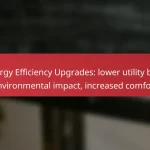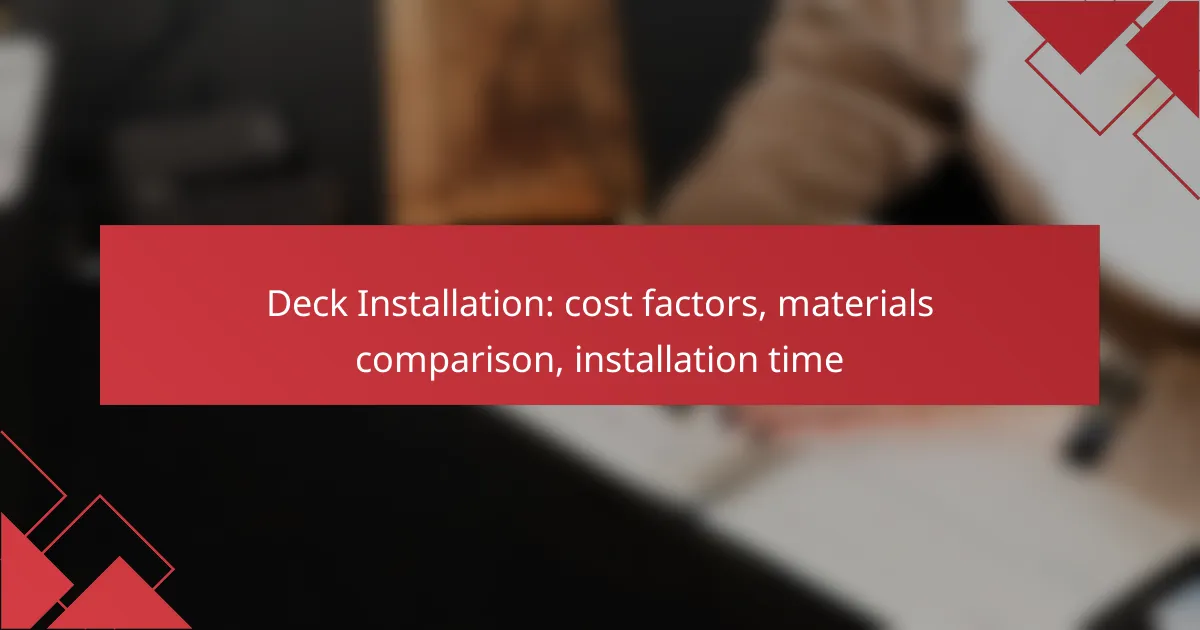Roof replacement is a significant investment for homeowners, with costs in the UK generally ranging from £4,000 to £8,000 based on material choices and installation complexity. Selecting the right roofing material, such as asphalt shingles, slate, or tile, is crucial for balancing durability and aesthetic appeal. Additionally, the installation process can vary in duration, typically taking from a few days to a couple of weeks, influenced by project specifics and weather conditions.

What is the average cost of roof replacement in the UK?
The average cost of roof replacement in the UK typically ranges from £4,000 to £8,000, depending on various factors such as the type of materials used and the complexity of the installation. Homeowners should consider both the initial investment and long-term durability when selecting roofing materials.
Cost range for asphalt shingles
Asphalt shingles are one of the most popular roofing materials due to their affordability and ease of installation. The cost for asphalt shingle roof replacement generally falls between £3,000 and £6,000, depending on the size of the roof and the quality of the shingles chosen.
Homeowners can expect to pay more for architectural shingles, which offer better durability and aesthetic appeal, with prices potentially reaching the higher end of the range.
Cost range for slate roofs
Slate roofs are known for their longevity and elegant appearance, but they come with a higher price tag. The cost for replacing a slate roof typically ranges from £8,000 to £15,000, influenced by the quality of the slate and the complexity of the installation.
Investing in slate can provide a long-term solution, as these roofs can last over a century with proper maintenance, making them a worthwhile consideration for many homeowners.
Cost range for tile roofs
Tile roofs, often made from clay or concrete, offer durability and a distinctive look. The cost for tile roof replacement usually ranges from £7,000 to £12,000, with variations based on the type of tile and the roof’s design.
While tile roofs can be more expensive upfront, their longevity and energy efficiency can lead to savings over time, making them a popular choice in many regions.
Factors affecting pricing
It’s also important to consider labor costs, which can vary significantly based on the contractor’s experience and the region. Obtaining multiple quotes and checking references can help ensure a fair price and quality workmanship.
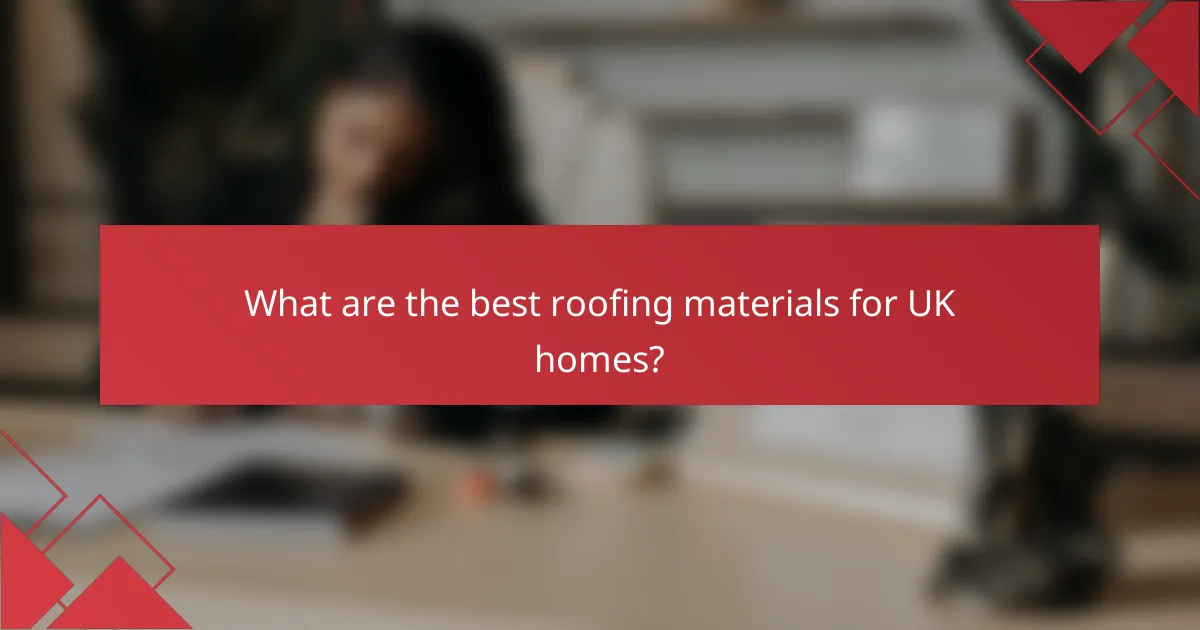
What are the best roofing materials for UK homes?
The best roofing materials for UK homes include asphalt shingles, slate, and tile. Each option offers unique benefits, durability, and aesthetic appeal, making them suitable for various architectural styles and budgets.
Benefits of asphalt shingles
Asphalt shingles are popular due to their affordability and ease of installation. They typically cost between £50 to £70 per square meter, making them a budget-friendly choice for homeowners.
These shingles come in a variety of colors and styles, allowing for customization to match the home’s exterior. They also have a lifespan of around 20 to 30 years, depending on the quality and maintenance.
Benefits of slate roofing
Slate roofing is renowned for its durability and longevity, often lasting over 100 years with proper care. While the initial cost can be higher, typically ranging from £80 to £120 per square meter, the investment pays off in the long run due to minimal maintenance needs.
Additionally, slate offers a timeless aesthetic that enhances property value. It is also fire-resistant and can withstand harsh weather conditions, making it a reliable choice for UK climates.
Benefits of tile roofing
Tile roofing, particularly clay and concrete tiles, is known for its robustness and energy efficiency. Prices generally range from £60 to £100 per square meter, providing a balance between cost and durability.
Tile roofs can last 50 years or more and are available in various styles and colors. They are also excellent at insulating homes, which can lead to energy savings over time. However, installation can be more complex, requiring skilled labor to ensure proper fitting and longevity.
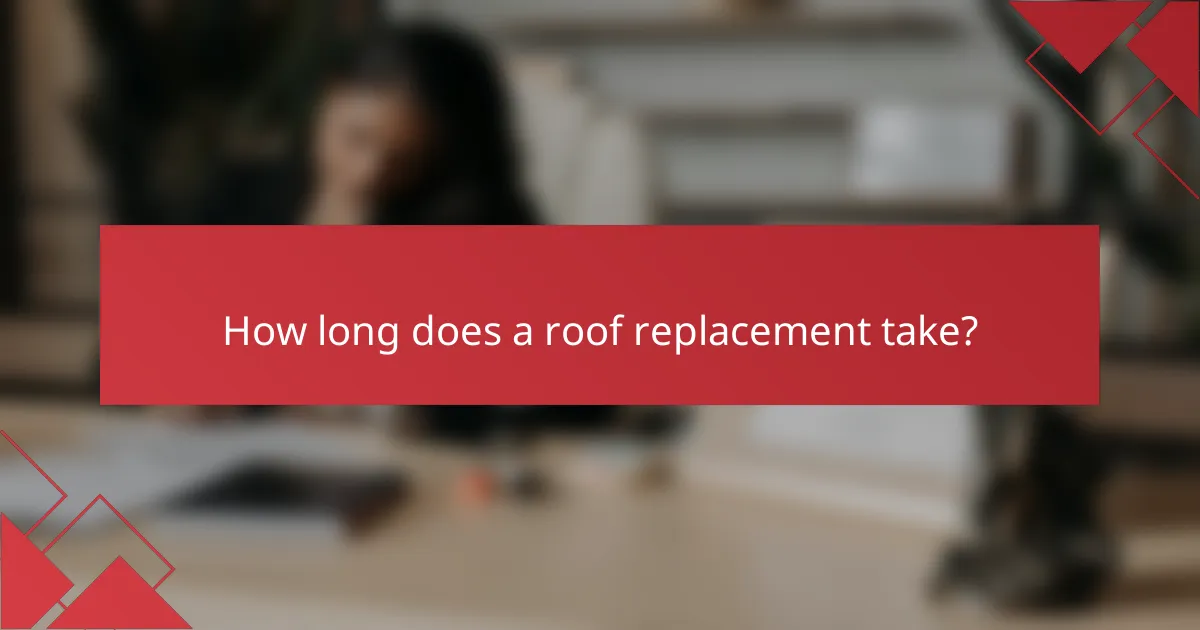
How long does a roof replacement take?
A roof replacement typically takes anywhere from a few days to a couple of weeks, depending on various factors. The complexity of the project, weather conditions, and the type of materials used can all influence the overall timeline.
Typical installation timeline
On average, a straightforward roof replacement can be completed in about 1 to 3 days. This includes the removal of the old roofing material, any necessary repairs to the underlying structure, and the installation of the new roof. More complex projects, such as those involving multiple layers or extensive repairs, may extend the timeline to a week or more.
For larger homes or those with intricate designs, the installation might take up to 2 weeks. It’s essential to factor in additional time for unexpected issues, such as bad weather or material delays, which can further prolong the process.
Factors influencing duration
Several factors can affect how long a roof replacement takes. The size and pitch of the roof are significant; steeper roofs or those with multiple sections generally require more time to work on safely. Additionally, the type of roofing material chosen can impact installation speed, with some materials being quicker to install than others.
Weather conditions play a crucial role as well. Rain, snow, or extreme temperatures can halt work and extend the timeline. Finally, the availability and efficiency of the roofing crew can also influence how quickly the project is completed, so it’s wise to hire experienced professionals to minimize delays.

What are the steps involved in roof replacement?
Roof replacement involves a series of critical steps that ensure a successful and durable installation. These steps include inspection and assessment, material selection, and the installation process itself.
Step 1: Inspection and assessment
The first step in roof replacement is a thorough inspection and assessment of the existing roof. This involves checking for damage, leaks, and structural integrity to determine the extent of the work needed.
Homeowners should consider hiring a professional inspector to evaluate the roof’s condition accurately. This assessment helps in identifying whether a full replacement is necessary or if repairs can suffice.
Step 2: Material selection
Choosing the right materials is crucial for a successful roof replacement. Common options include asphalt shingles, metal roofing, tile, and slate, each with varying costs and lifespans.
When selecting materials, consider factors such as climate, durability, and aesthetic preferences. For example, asphalt shingles are often the most affordable option, while metal roofing offers longevity and energy efficiency.
Step 3: Installation process
The installation process typically begins with removing the old roofing material, followed by repairs to the underlying structure if needed. New underlayment is then installed to provide an additional moisture barrier.
Finally, the chosen roofing material is applied according to manufacturer specifications. It’s essential to hire experienced contractors who adhere to local building codes to ensure a proper installation.

What are the key considerations before replacing a roof?
Before replacing a roof, it’s essential to evaluate factors such as material options, budget constraints, and local regulations. These considerations will help ensure a successful and compliant roofing project that meets your needs.
Building regulations in the UK
In the UK, roof replacements must comply with local building regulations, which ensure safety and energy efficiency. Homeowners should check with their local council to understand specific requirements, including planning permissions and structural integrity standards.
Common regulations may include the use of fire-resistant materials and adherence to insulation standards. It’s advisable to consult the Building Regulations Approved Document for detailed guidance on what is required for your area.
Choosing a qualified contractor
Selecting a qualified contractor is crucial for a successful roof replacement. Look for professionals with experience, positive reviews, and appropriate certifications. It’s beneficial to obtain multiple quotes to compare pricing and services offered.
Ensure the contractor provides a detailed written estimate and warranty for their work. Checking references and previous projects can also help verify their reliability and quality of workmanship.
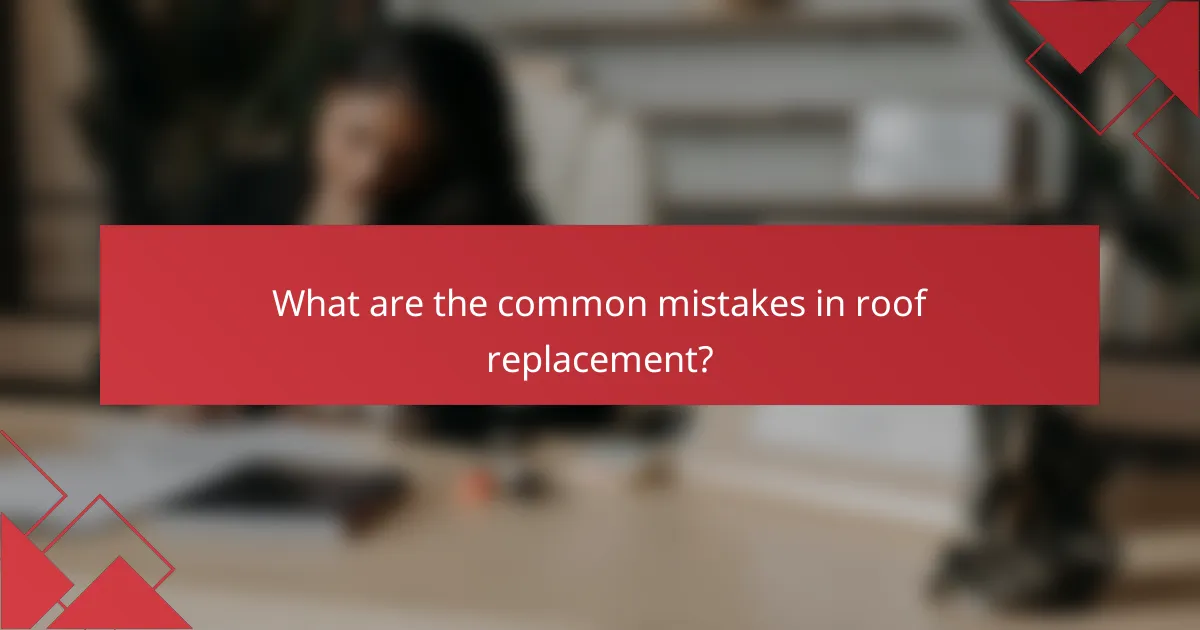
What are the common mistakes in roof replacement?
Common mistakes in roof replacement can lead to increased costs and subpar results. Key errors include ignoring local weather conditions and underestimating material costs, both of which can significantly impact the longevity and effectiveness of the new roof.
Ignoring local weather conditions
Failing to consider local weather conditions can result in choosing inappropriate roofing materials. For example, areas with heavy snowfall require roofs designed to bear significant weight, while regions prone to high winds may need materials that can withstand gusts effectively.
It’s crucial to research the climate in your area and select materials that are rated for those conditions. For instance, asphalt shingles might be suitable for mild climates, but metal or tile may be better choices in harsher environments.
Underestimating material costs
Many homeowners underestimate the total material costs involved in roof replacement, leading to budget overruns. It’s essential to account for not only the primary roofing materials but also underlayment, flashing, and ventilation components.
To avoid surprises, obtain detailed estimates from multiple suppliers and include a buffer of around 10-20% for unexpected expenses. This approach helps ensure that you have sufficient funds to cover all necessary materials without compromising quality.

How can I find reputable roofing contractors in the UK?
To find reputable roofing contractors in the UK, start by seeking recommendations from friends or family and checking online resources. Look for contractors with positive reviews, relevant qualifications, and a solid portfolio of past work.
Online reviews and ratings
Online reviews and ratings are crucial for assessing the reputation of roofing contractors. Websites like Trustpilot, Google Reviews, and Checkatrade provide insights into customer experiences and satisfaction levels.
When evaluating reviews, pay attention to the overall rating and the number of reviews. A contractor with a high rating and numerous reviews is generally more reliable than one with only a few positive comments.
Additionally, look for patterns in the feedback. Consistent mentions of quality workmanship, timely completion, and good communication are positive indicators, while recurring complaints about delays or poor customer service should raise red flags.


